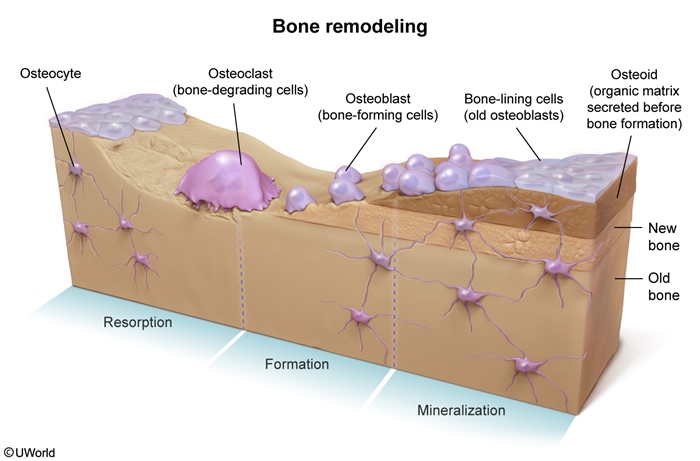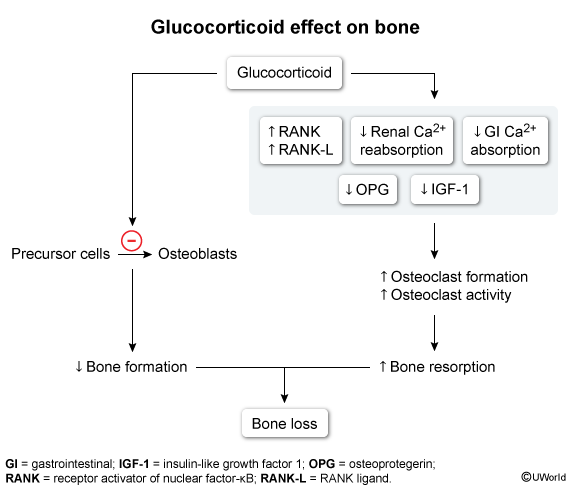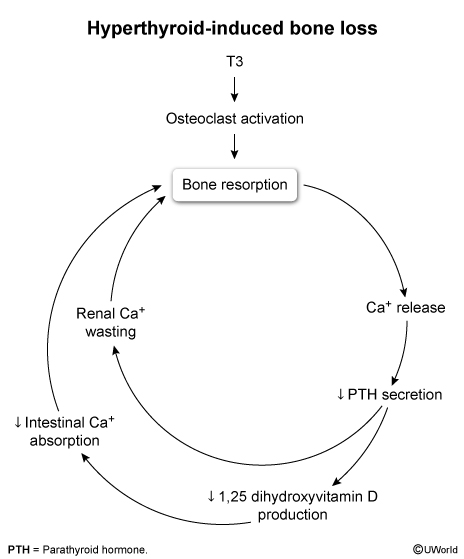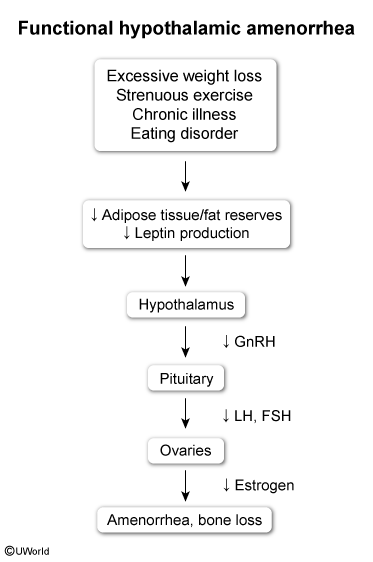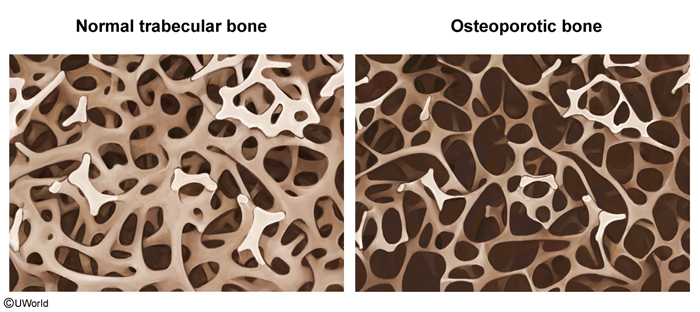Osteoporosis
Article Sections
Introduction
Osteoporosis is characterized by decreased bone mineral density (BMD), increased bone fragility, and susceptibility to fractures. It is most common in postmenopausal women but also occurs in premenopausal women and in men. Osteoporosis is often asymptomatic until the patient experiences a fracture, typically involving the hip, vertebrae, or wrist. However, screening can identify patients who may benefit from treatment before a fracture occurs, particularly in postmenopausal women.
Pathophysiology
Bone remodeling involves a balance between bone resorption by osteoclasts and bone formation by osteoblasts (Figure 1). Osteoclast differentiation and bone-resorptive activity are promoted by the receptor activator of nuclear factor kappa B (RANK)/RANK-ligand and inhibited by osteoprotegerin, which acts as a decoy receptor. Estrogen maintains bone mass in premenopausal women (and men via conversion from androgens) by suppressing expression of RANK on osteoclast precursors and inducing production of osteoprotegerin by osteoblasts. The net effect is prolonged survival of osteoblasts, reduced differentiation and survival of osteoclasts, and reduced bone turnover (
Continue Learning with UWorld
Get the full Osteoporosis article plus rich visuals, real-world cases, and in-depth insights from medical experts, all available through the UWorld Medical Library.
Figures
